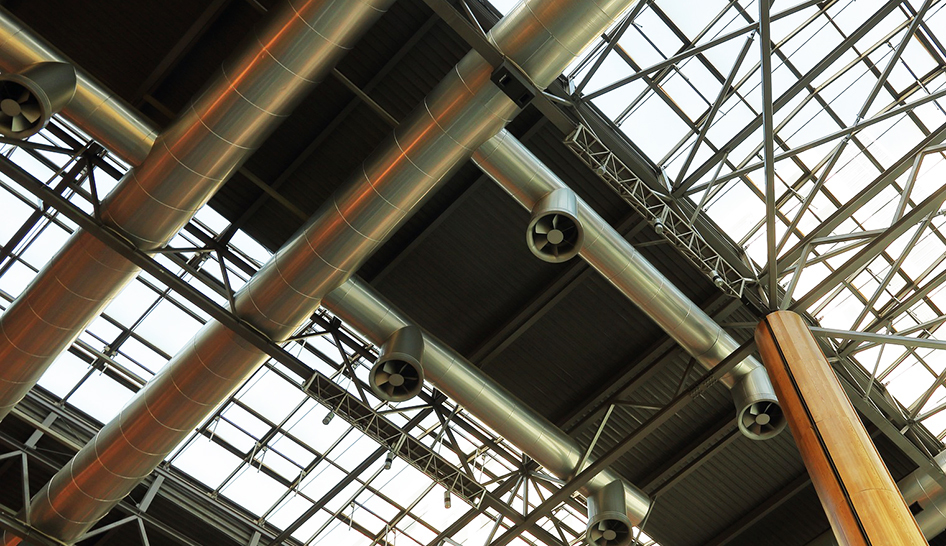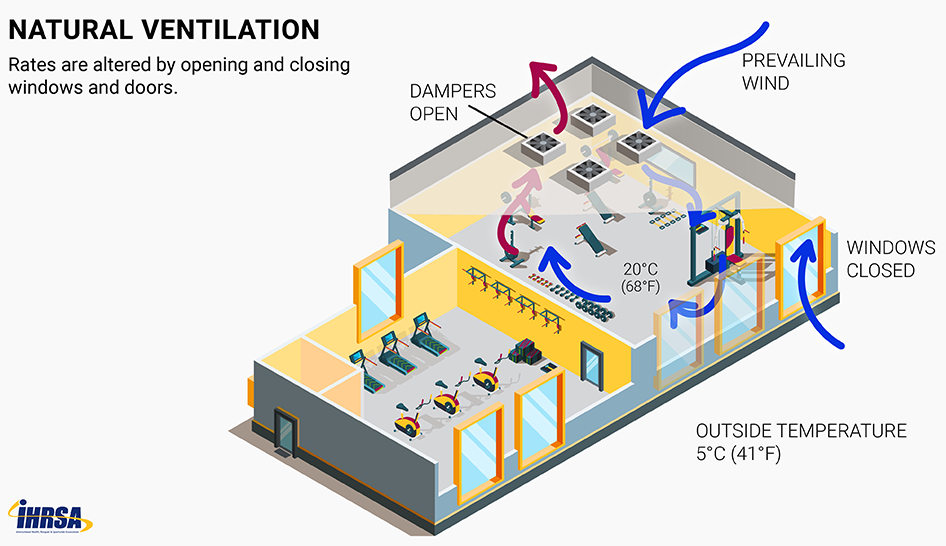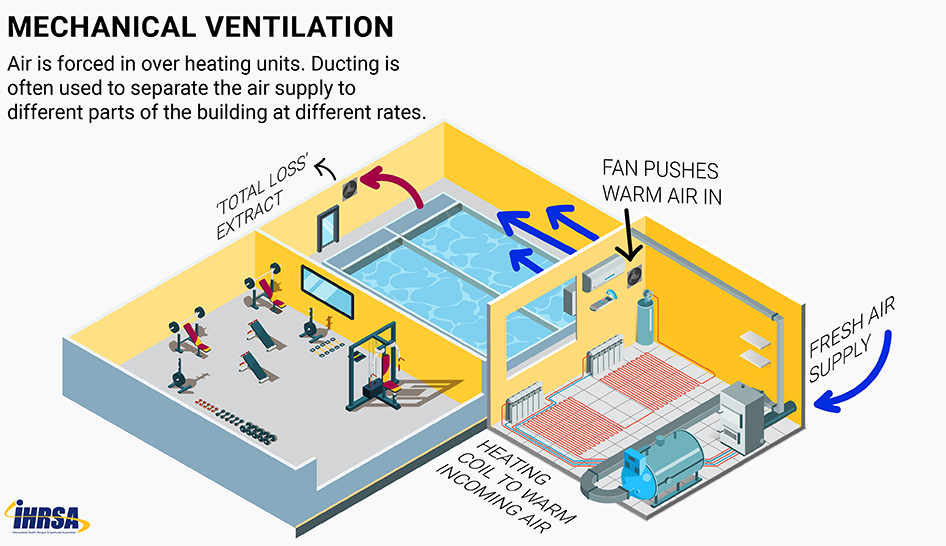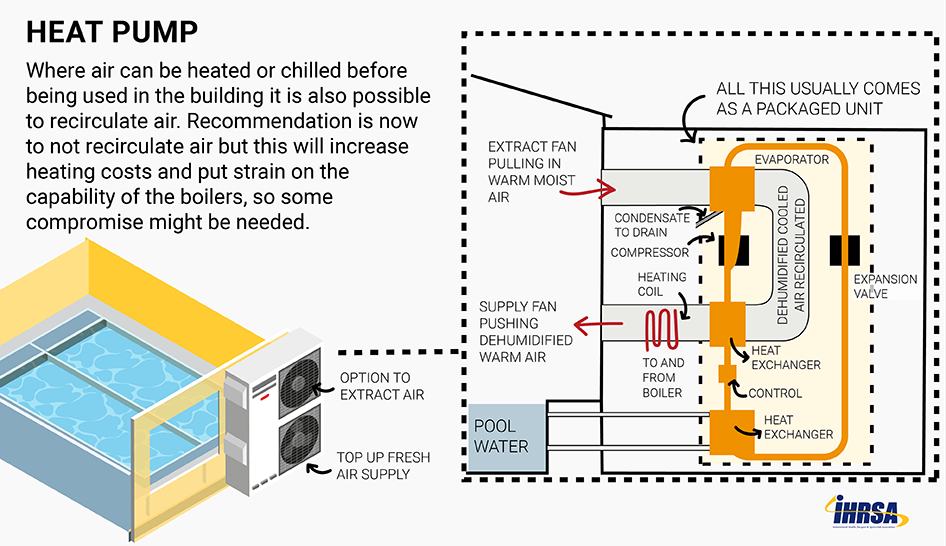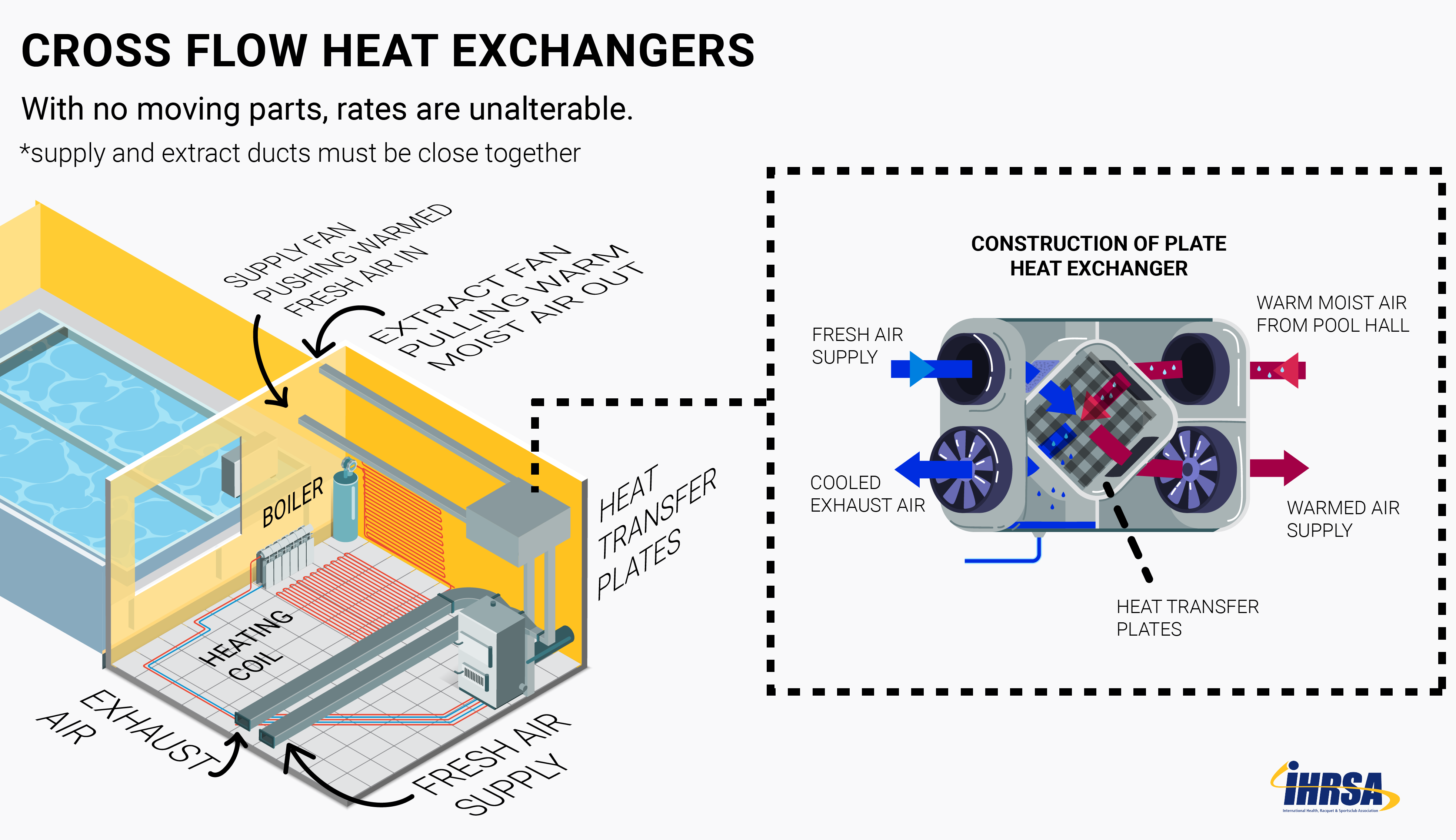The author of this article, Paul Hackett, is a chartered safety & health practitioner and OSHCR registered consultant with extensive international experience and a former sports, fitness, and aquatics facilities operator. He is also a member of the IHRSA-led experts group who developed the key considerations and risk assessment tools to help clubs reopen and stay open.
Good ventilation reduces the concentration of the virus in the air and will therefore reduce the risk of airborne transmission in a facility. Poor ventilation will increase the concentration and consequently increase the risk of transmission.
Ventilation is also intimately linked to heating and this is especially relevant in cold weather. We have to balance providing adequate ventilation with the need to heat the building and keep our customers and staff warm.
Some buildings were designed to be completely air conditioned and will be very difficult to alter airflow and volume. The adjustments we make may need to be in the volume of people using the building rather than the mechanical capability of the ventilation. As of yet, we have no truly indicative measure to the effectiveness of our ventilation to remove potentially contaminated air, so we have to use a substitute, which is the only one recommended to date—CO2 levels.
For operators in established facilities, the quality of ventilation is normally established at the design and construction stage of the facility’s life and providing we have been sensible and funded adequate mechanical and electrical services, there will be little we can do to improve ventilation or air conditioning after it has been commissioned. If you’re unsure, ask the advice of your heating ventilation and air conditioning (HVAC) engineer or adviser.
